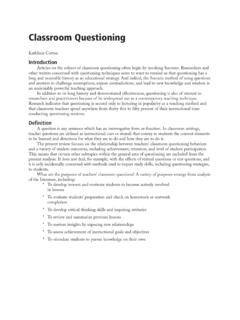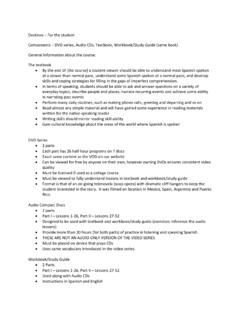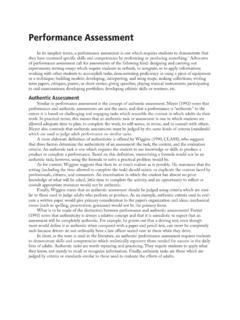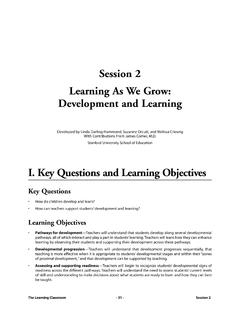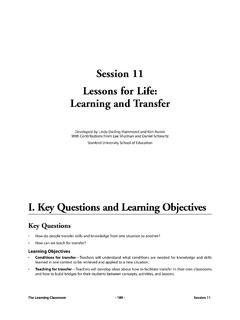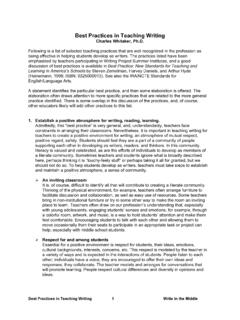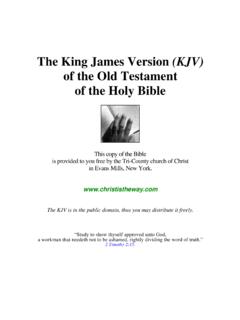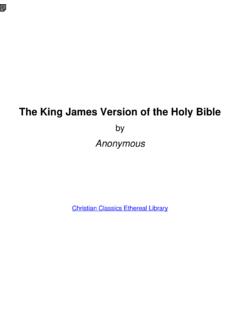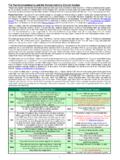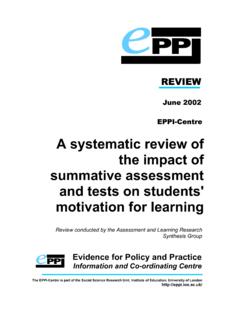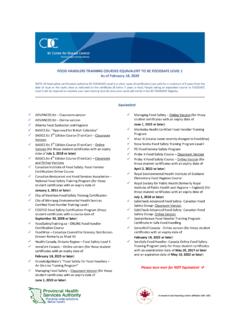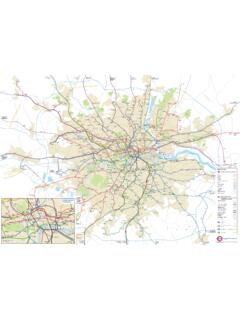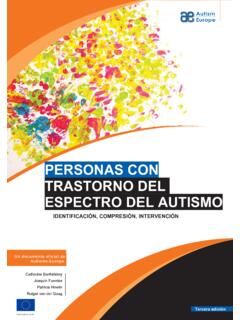Transcription of Multiculturalism’s Five Dimensions - Learner
1 multiculturalism 's five Dimensions Dr. james A. Banks on Multicultural Education Dr. james A. Banks, author of Educating Citizens in a Multicultural Society (Teachers College Press, $ ), spoke recently with NEA Today's Michelle Tucker about the concept he's developed called the five Dimensions of multicultural education. Especially for NEA Today Online readers, here is the complete interview. A shorter version ran in the September 1998 issue. Could you briefly describe the five Dimensions of multicultural education? Yes. But I'd like to first, if I may, talk a little bit of why I developed the Dimensions .
2 I found in my work with teachers that many thought of multicultural education as merely content integration. I once gave a talk on multicultural education at a school. When I was done, a math teacher said to me, What you said is fine for social studies, but it has nothing to do with me.. My first reaction was anger and frustration. But then I thought my role as a scholar is to get beyond that and realize that maybe other teachers think that also that in the minds of many science and math teachers, multicultural education was simply content integration.
3 So I developed the five Dimensions of multicultural education to help educators see that content integration say, putting content about Mexican Americans or African Americans in the curriculum . is important, but that it's only the first dimension of multicultural education, and that multicultural education has at least five Dimensions . So the first dimension is content integration? Yes, because that is how we got started. That is, we got started putting African Americans in the curriculum, Mexican Americans in the curriculum, Asian Americans in the curriculum.
4 But while that's important, that's really only one dimension. You'll notice that as I move across the Dimensions , more and more teachers can get involved more kinds of teachers, whether they teach math or science. Frankly, with content integration, language arts and social studies teachers can do more than the physics teacher. Now, it's true that the physics teacher can show bulletin boards of famous women who were physicists, or minority physicists, or people of color who were physicists, but that isn't really what multicultural education is about.
5 As I move across these, you'll see what I really consider the heart of multicultural education for the physics teacher. What's the second dimension? Knowledge construction. The knowledge construction process moves to a different level because here teachers help students to understand, investigate, and determine the implicit cultural assumptions and frames of reference and perspectives of the discipline they're teaching. In other words, we help kids understand. I'll give an example. What are the values that underlie knowledge?
6 How do historians or scientists construct knowledge? We begin to look at some of the assumptions of knowledge. Look at the values and assumptions that underlie terms like the westward movement, for example. What does that term mean? What does the author mean about the west? It wasn't west to the Lakota Sioux. It was the center of the universe. That was their home. It wasn't west for the Mexicans because it was north. And it wasn't west for the Japanese it was east. So if it was west for one group of people, that was the Anglo Americans who were headed toward the Pacific.
7 Knowledge construction then helps kids understand that when scientists or textbook writers use words like the westward movement, these words are heavily loaded. There are a lot of values and assumptions that underlie words like that. So this helps children to become more critical thinkers and readers? Exactly. It helps them become more critical readers. More critical thinkers. For example, the book The Bell Curve suggested that African Americans were intellectually inferior to whites. So the question becomes, What are the assumptions of that writer?
8 That's the knowledge construction process. You write that the third dimension is equity pedagogy. What's that? By equity pedagogy, I simply mean that teachers change their methods to enable kids from diverse racial groups and both genders to achieve. My friend who's at the University of London has introduced the concept of the multicultural atom. What's that? It's an atom that all kids can understand. Equity pedagogy has to do with the physics teacher not so much adding content about women physicists and African American physicists, but rather the physics teacher changing the way she teaches physics, for example, so that girls and African Americans can learn physics.
9 What we found, for example, from the work by people like Triesman, is that African American students will learn calculus better if they learn it in cooperative groups. Elizabeth Cohen has found that, too. So that equity pedagogy has to do with the physics teacher modifying the way he or she teaches physics in order to enable Mexican American students to learn it more effectively. In other words, the metaphor of the multicultural atom captures the essence of equity pedagogy. Does classifying students by learning styles risk stereotyping them?
10 I'm not really talking about learning styles. I'm talking about teachers modifying their teaching styles so that they use a wide range of strategies and teaching techniques such as cooperative groups, simulations, role-playing, and discovery. In the end, this will help many white children, too, since they often do not learn from a highly individualistic, competitive teaching strategy either. So teachers are not necessarily saying, Oh, I have Asian American students in my class. This research says this, so I'll teach them particularly this way.
